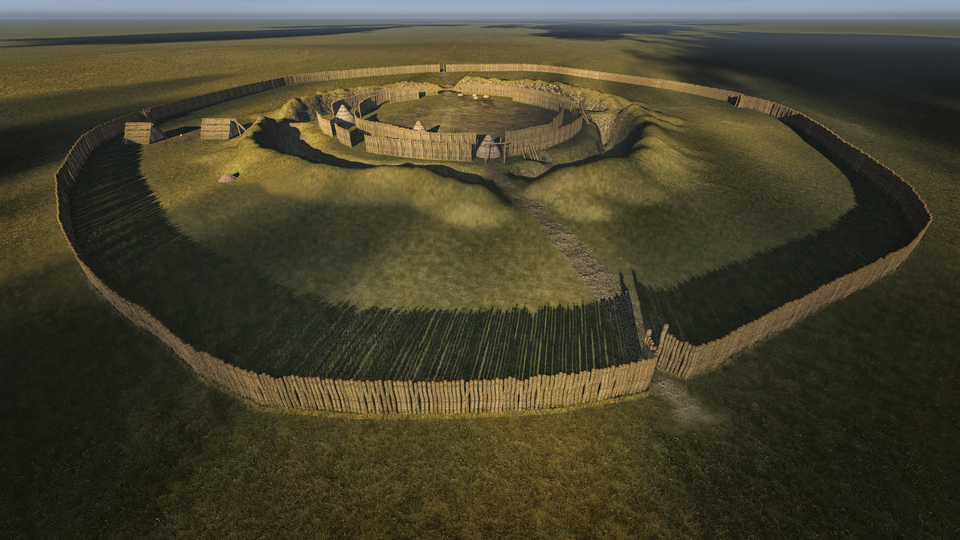Anthropology
Showing Original Post only (View all)Archaeologists Discovered 7,000-Year-Old Structure Older Than Stonehenge or Pyramids of Giza [View all]
Harrison Jacobs - 8h ago
Archaeologists in the Czech Republic have discovered a 7,000-year-old circular structure measuring approximately 180 feet in diameter, Radio Prague International reported earlier this month.
The structure, known as a roundel, dates to the Neolithic period and archaeologists believe it was constructed between 4900 B.C.E. and 4600 B.C.E. The roundel, and others like it in Europe, are considered to be the oldest massive structures in Europe.
For comparison, construction on Stonehenge is believed to started around 3100 B.C.E., while the famed Pyramids of Giza are thought to have been erected around 2600 B.C.E. at the earliest. That makes the roundel at least 1,000 years older than Stonehenge and several thousand years older than the pyramids.
This roundel was uncovered in Vinoř, a district on the outskirts of Prague. Around 200 roundels have been discovered across Europe, with 35 of them found in the Czech Republic.
More:
https://www.msn.com/en-us/news/world/archaeologists-discovered-7000-year-old-structure-older-than-stonehenge-or-pyramids-of-giza/ar-AA12aHfJ
~ ~ ~
Archaeologists in Prague uncover ancient Neolithic structure
09/06/2022

Archaeologists in Prague uncover ancient Neolithic structure
Length of audio 3:10
The so-called roundel, built around 7,000 years ago, is located in the district of Vinoř on the outskirts of Prague|Photo: Labrys
Archaeologists in Prague are currently uncovering a monumental building from the Stone Age. The so-called roundel, built around 7,000 years ago, is located in the district of Vinoř on the outskirts of the city. Experts are hoping that the research will reveal more information about these mysterious ancient structures.
Roundels are large circular structures from the Neolithic period, that were constructed between 4600–4900 BC. That makes them the oldest monumental buildings in Europe, far older than the Egyptian pyramids or England’s Stonehenge.
One such roundel is currently being examined in Prague’s district of Vinoř. So far, research has shown that the structure is exceptionally well-preserved. Archaeologists were surprised to discover intact remains of the palisade troughs into which the central wooden structure was originally embedded.
Despite these findings, it is still unclear what purpose these structures have served, says Miroslav Kraus, who is in charge of the research:
More:
https://english.radio.cz/archaeologists-prague-uncover-ancient-neolithic-structure-8760696
~ ~ ~

Wikipedia:

Rondel (prehistoric structure)
Reconstruction of a roundel from the Middle Ages in Künzing-Unternberg
Rondel is a monumental building with a circular plan. It appears in the Danube during the Neolithic, from where they spread westward to Moravia , Bohemia , [1] Austria , Bavaria , the Rhineland and as far as Britain . With the development of aerial archaeology , other sites were found. Today, around 150 of these objects are known in Europe, and new ones are still being discovered.
Roundel architecture
Rondels are circular areas ranging from 30 to 210 meters in diameter (most often between 55 and 97 meters), [2] which vary regionally but are usually surrounded by a ditch (usually one to three) and often one or more stake palisades . The inner space was not inhabited, but there are pits (perhaps sacrificial ones), the remains of ovens and hearths. Rondels are often found in higher places of the housing estate with a good view.
Roundels feature
Scientists debate their function. Their opinions could be divided into groups:
Cult places → Religious-ritual
Fortification → Military
Place of meeting and trade (i.e. exchange) → Social
A place of joint work that unites society → Social
Place for running games [2]
A place used for the operation of proto-theatrical forms - rituals in the context of ceremonies [3]
The most common opinion is that the roundels had multiple functions, for example that they were originally ritual buildings (the oldest buildings of this type in the history of mankind), which also had the function of gathering places and could be defended if necessary.
Semantic meaning
The rondel may be a historical example of a circle symbol. The sign of the circle can be interpreted as a symbol of the cycle of time and the cycle of life and nature. The circle can be considered the anthropological foundation of the symbols of our humanity. [3] However, it can only be a practical meaning, where a circle represents a shape with a minimum circumference (here palisades) in relation to a bounded area.
Localities with roundels in the Czech Republic and Slovakia
Over 100 rondels are known from Europe. The former are associated with the Linear Pottery culture . On the territory of the Czech Republic, roundels are found in the period of the culture with pierced ceramics (4900–4200 BC) and the culture with Moravian painted ceramics .
https://cs.wikipedia.org/wiki/Rondel_(prav%C4%9Bk%C3%A1_stavba)

Professor Irwin Corey
The World's Foremost Authority